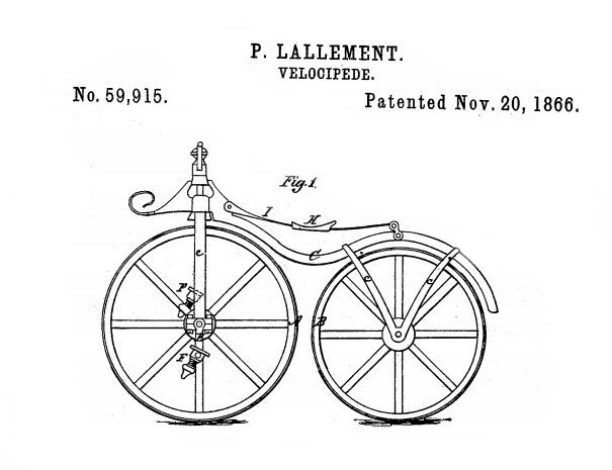On November 20, 1866, mechanic Pierre Lallement, a temporary resident of New Haven, Connecticut, received a patent for an improvement in velocipedes. Credited with paving the way for the modern-day pedal bicycle, his improvement consisted of two wheels placed “one directly in front of the other, combined with a mechanism for driving the wheels, and an arrangement for guiding.”
Lallement, a carriage maker by trade in France, was inspired by the new velocipede and began work on his own two-wheeled design. Arriving in the United States on the steamer City of London in July of 1865, he continued to refine what became known as the “boneshaker”—a bicycle with ironclad wooden rims, a larger front wheel, and a saddle seat supported by a thin strip of iron acting as a spring. Lallement demonstrated his version of the bike along the roads of Ansonia and New Haven, finding a financial backer in James Carroll of New Haven. Filing (in April of 1866) one of the earliest American patent applications for the use of cranks on a front wheel for motion and the use of a pedal mechanism on a bicycle, Lallement received the patent in November.
Unfortunately, financial success did not follow. He proved unable to find an American manufacturer willing to buy his patents rights so he sold them to a representative, Calvin Witty, and returned to Paris. Albert Pope eventually purchased the patent in 1876 and started producing the bicycles at the Weed Sewing Machine Company of Hartford under the name Columbia.









